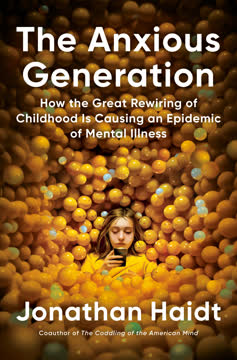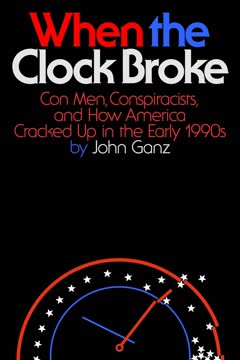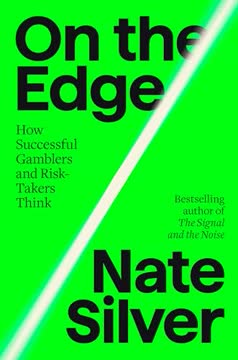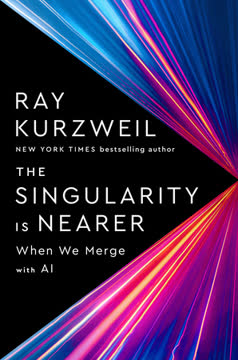Key Takeaways
1. The rise of the "nones" is reshaping America's religious landscape
In 2018, the GSS indicated that the "nones" were now the same size statistically as Roman Catholics and evangelical Protestants, with simple projections suggesting that the nones will likely be the largest religious group in America inside a decade.
Dramatic shift in religiosity. The percentage of Americans identifying as religiously unaffiliated has skyrocketed from just 5% in 1972 to nearly 25% in 2018. This growth has been particularly rapid since the early 1990s, with the "nones" now rivaling evangelical Protestants and Catholics as the largest religious groups in the United States.
Decline of traditional faiths. While the nones have grown, most other religious traditions have seen declines:
- Mainline Protestants: From 30% in 1970s to 10% in 2018
- Catholics: From 27% to 23% since 2000
- Evangelical Protestants: From 30% in 1993 to 21.5% in 2018
This seismic shift is reshaping American culture, politics, and social dynamics, with far-reaching implications for the future of religion in the United States.
2. Secularization theory explains the decline in religious affiliation
According to this simple model, the share of American citizens in the United States who should rate religion as very important is less than 5 percent based on the country's economic prosperity.
Education and prosperity drive secularization. Secularization theory, proposed by sociologists like Max Weber, argues that as societies become more educated and economically prosperous, they tend to move away from religion. This pattern is clearly visible in most developed European nations, where church attendance and religious affiliation have plummeted.
American exceptionalism challenged. The United States has long been an outlier to secularization theory, maintaining high levels of religiosity despite its economic development. However, recent trends suggest that America may be experiencing a delayed secularization:
- Rising education levels correlate with increased religious disaffiliation
- Younger generations are significantly less religious than older cohorts
- The rapid growth of the nones aligns with secularization predictions
While the U.S. remains more religious than many European countries, the data indicates it may be following a similar, if delayed, trajectory towards secularization.
3. Social desirability bias masks true rates of religious disaffiliation
In essence, half of the people who said they attend church once a week lied about it.
Overreporting of religious behavior. Social desirability bias leads many Americans to exaggerate their religious involvement when surveyed. Studies comparing self-reported church attendance with actual headcounts reveal significant discrepancies:
- In one county, 35.8% claimed weekly attendance, but only 19.6% actually attended
- National surveys likely overestimate religious participation by 10-15 percentage points
Declining stigma of non-religion. As social norms shift, people feel more comfortable admitting their true religious (or non-religious) status:
- Older generations increasingly identify as nones in surveys
- Younger people are more likely to openly claim non-religious identities
This suggests that the rise of the nones may be partly due to increased honesty about religious disaffiliation, rather than solely a result of new deconversions.
4. The internet and politics accelerate the growth of religious nones
It seems possible that this dramatic increase in disaffiliation is due, at least in part, to a backlash against conservative evangelical politics.
Online community for doubters. The internet has provided spaces for those questioning their faith to find like-minded individuals and access information challenging religious beliefs. This has broken the "spiral of silence" that previously isolated religious doubters, particularly in conservative communities.
Political polarization drives disaffiliation. The strong alignment of white evangelical Christianity with conservative Republican politics has alienated many moderates and liberals:
- In 1978, 50% of white weekly churchgoers were Democrats; today, only 25% are
- 93% of white Protestants attend churches where Trump's approval rating exceeds the national average
- Liberals are 4 times more likely than conservatives to be religiously unaffiliated
This political-religious fusion has led many left-leaning individuals to feel unwelcome in churches, accelerating their disaffiliation.
5. Changing family structures contribute to religious disaffiliation
Looked at broadly, half of all atheists and agnostics and more than 45 percent of nothing in particulars have not seen their fortieth birthday.
Delayed life milestones impact religiosity. Traditional triggers for increased religious involvement, such as marriage and having children, are occurring later in life or not at all for many Americans:
- Married adults: 74% in 1972 vs. 42.5% in 2018
- Average age of first marriage: 20 for women in 1960 vs. 28 in 2018
Family status correlates with affiliation. The data shows clear links between family structure and religious involvement:
- 35% of unmarried, childless adults are religiously unaffiliated
- Only 16% of married adults with children are unaffiliated
As more Americans remain single or childless into their 30s and 40s, they are less likely to return to religious communities, contributing to the growth of the nones.
6. Not all nones are created equal: Atheists, agnostics, and "nothing in particulars"
To translate that to actual numbers—the CCES indicates that twenty million more Americans are religiously unaffiliated than the GSS.
Diverse non-religious identities. The religiously unaffiliated can be broadly categorized into three groups:
- Atheists (5.7% of population): Firmly reject belief in God
- Agnostics (5.7%): Uncertain about God's existence
- Nothing in particulars (19.9%): Unaffiliated but not necessarily non-believers
Distinct demographic profiles. These groups differ significantly in their characteristics:
- Education: 44% of atheists have a bachelor's degree vs. 20% of nothing in particulars
- Gender: 60% of atheists are male vs. 50% of nothing in particulars
- Politics: Atheists are the most liberal, nothing in particulars are moderate
Understanding these distinctions is crucial for accurately assessing the religious landscape and developing targeted outreach strategies.
7. The "nothing in particulars" represent the largest mission field
If a Christian is trying to be strategic about reaching out to those without a religious affiliation, the data tells a clear story: trying to convert atheists is going to end in failure ninety-nine times out of a hundred.
Most receptive to religion. Among the nones, the "nothing in particulars" show the most potential for religious reengagement:
- 35% say religion is somewhat or very important in their lives
- 20% attend church at least once a year
- 16.4% became Christians over a 4-year study period
Fastest-growing group. Nothing in particulars have increased by 5.6 percentage points in the past decade, now comprising 20% of the U.S. population.
Socioeconomic challenges. This group faces significant struggles:
- Lowest education levels of any religious group (24% with bachelor's degree)
- 60% earn less than $50,000 per year
- Less politically and socially engaged than other nones
Churches seeking to reverse the trend of disaffiliation should focus their efforts on reaching out to nothing in particulars, who may benefit most from religious community support.
8. Globalization and secularization are unstoppable forces
To try to stop globalization by imposing tariffs on imported goods is the functional equivalent of attempts to stop secularization by posting the Ten Commandments in more American courthouses.
Parallel trends reshaping society. Both globalization and secularization are fundamental shifts that cannot be easily reversed:
- Globalization: Transformed manufacturing, led to wage stagnation
- Secularization: Dramatically altered religious landscape
Futile resistance. Efforts to combat these trends often prove ineffective:
- Protectionist policies fail to bring back manufacturing jobs
- Traditional religious outreach methods struggle to stem the tide of disaffiliation
Adaptation is key. Rather than fighting these unstoppable forces, churches and society must learn to navigate the new reality they create.
9. Churches must adapt to the new reality of religious disaffiliation
If Christians want to seek and save the lost, why would some of them go out of their way to alienate a third of the population of the United States?
Listen to disaffiliation stories. Churches need to understand why people leave:
- Abuse and trauma within religious institutions
- Feeling unwelcome due to sexuality or life choices
- Intellectual doubts left unaddressed
Depoliticize religious spaces. The strong association between conservative politics and Christianity alienates many potential churchgoers:
- 16 of 20 largest white Protestant denominations became more Republican from 2008-2018
- Politically charged social media posts by pastors discourage diverse attendance
Focus on "nothing in particulars". This group represents the most promising opportunity for religious reengagement:
- More open to religious ideas than atheists or agnostics
- Often facing socioeconomic challenges that churches could address
- Comprise a large and growing segment of the population
By listening, depoliticizing, and targeting outreach efforts, churches can better navigate the changing religious landscape and remain relevant in an increasingly secular society.
Last updated:
FAQ
What's "The Nones" about?
- Overview: "The Nones" by Ryan P. Burge explores the rise of the religiously unaffiliated in America, known as "nones," and examines their origins, characteristics, and future.
- Focus: The book provides a comprehensive analysis of the demographic, social, and political factors contributing to the growth of this group.
- Perspective: Burge combines his expertise as a sociologist and pastor to offer insights into how the nones are reshaping the American religious landscape.
- Structure: The book is structured to give both an aerial view of the trends and a detailed examination of the nones' demographics and beliefs.
Why should I read "The Nones"?
- Understanding Trends: It offers a deep dive into one of the fastest-growing demographics in America, providing valuable insights for anyone interested in religion, sociology, or cultural trends.
- Data-Driven Analysis: The book is grounded in robust statistical data, making it a reliable resource for understanding complex social changes.
- Practical Implications: For religious leaders and policymakers, it provides practical advice on how to engage with and address the needs of the nones.
- Broader Context: It situates the rise of the nones within larger societal shifts, such as secularization and political polarization.
What are the key takeaways of "The Nones"?
- Rapid Growth: The nones are now one of the largest religious groups in the U.S., with significant growth over the past few decades.
- Diverse Group: The nones are not monolithic; they include atheists, agnostics, and those who identify as "nothing in particular."
- Cultural Shifts: The rise of the nones is linked to broader cultural and political changes, including secularization and the internet's influence.
- Future Implications: Understanding the nones is crucial for religious institutions and society as they navigate future cultural and demographic shifts.
What are the best quotes from "The Nones" and what do they mean?
- "We move forward. It’s the only direction God gave us." This quote emphasizes the inevitability of change and the need to adapt to new realities.
- "Your world is not their world." This highlights the importance of understanding diverse perspectives and experiences, especially when engaging with the nones.
- "Seed that expresses the love and grace and hope of Jesus Christ is never truly lost." This suggests that efforts to reach out with compassion and understanding can have lasting impacts, even if immediate results aren't visible.
How does Ryan P. Burge define "nones" in "The Nones"?
- Definition: The nones are individuals who do not affiliate with any organized religion, including atheists, agnostics, and those who identify as "nothing in particular."
- Diversity: This group is diverse in beliefs and demographics, challenging the stereotype of nones as uniformly secular or anti-religious.
- Significance: They represent a significant and growing portion of the American population, influencing cultural and political landscapes.
- Complexity: The book emphasizes that nones are not a monolithic group, and understanding their nuances is crucial for engaging with them effectively.
What are the main reasons for the rise of the nones according to "The Nones"?
- Secularization: As societies become more educated and economically prosperous, they tend to move away from organized religion.
- Political Polarization: The alignment of religious groups with political parties has alienated some individuals, leading them to disaffiliate.
- Internet Influence: The internet has provided a platform for diverse beliefs and communities, making it easier for individuals to explore non-religious identities.
- Cultural Shifts: Broader cultural changes, including changing family structures and social norms, have contributed to the rise of the nones.
How does "The Nones" address the impact of politics on religious disaffiliation?
- Political Alignment: The book discusses how the close alignment of certain religious groups with political parties has driven some individuals away from organized religion.
- Partisan Divide: It highlights the growing partisan divide within religious communities, with many nones identifying as politically liberal.
- Cultural Backlash: The rise of the religious right and its political influence is seen as a factor in the increasing number of nones.
- Endogeneity: The book explores the complex relationship between politics and religion, questioning whether political beliefs influence religious affiliation or vice versa.
What demographic trends are highlighted in "The Nones"?
- Age: Younger generations are more likely to identify as nones, with millennials showing the highest rates of disaffiliation.
- Education: Higher levels of education are associated with higher rates of disaffiliation, although this trend varies by generation.
- Gender: Men are more likely to be nones than women, although the gap is narrowing among younger generations.
- Race: The book notes significant racial differences, with white and Asian Americans more likely to be nones compared to Black and Hispanic Americans.
How does "The Nones" categorize the different types of nones?
- Atheists: Individuals who do not believe in God and often hold strong anti-religious views.
- Agnostics: Those who are uncertain about the existence of God and often adopt a more open-minded stance.
- Nothing in Particular: A diverse group that does not identify with any specific religious or non-religious label, often less engaged in religious or political activities.
- Conversion Rates: The book discusses how these groups differ in their likelihood of converting to a religious tradition, with nothing in particulars being the most open to change.
What advice does "The Nones" offer to religious leaders?
- Understand the Nones: Religious leaders are encouraged to understand the diverse backgrounds and beliefs of the nones to engage with them effectively.
- Avoid Political Alienation: The book advises against aligning too closely with political ideologies that may alienate potential members.
- Focus on Community: Emphasizing community and social support can attract those who are disaffiliated but still seek connection and meaning.
- Adapt to Change: Leaders are urged to adapt to cultural and demographic shifts, recognizing that traditional methods may no longer be effective.
How does "The Nones" suggest addressing the spiritual needs of the nones?
- Listening: The book emphasizes the importance of listening to the stories and experiences of the nones to understand their perspectives.
- Inclusivity: Creating inclusive environments that welcome diverse beliefs and backgrounds can help engage the nones.
- Community Engagement: Fostering a sense of community and belonging can address the social and spiritual needs of the nones.
- Focus on Values: Emphasizing shared values and common goals, rather than doctrinal differences, can bridge gaps between religious and non-religious individuals.
What future trends does "The Nones" predict for American religion?
- Continued Growth: The nones are expected to continue growing, potentially becoming the largest religious group in the U.S. within a decade.
- Cultural Influence: As their numbers increase, the nones will have a significant impact on cultural and political landscapes.
- Diverse Beliefs: The diversity within the nones will continue to challenge traditional religious institutions to adapt and evolve.
- Potential for Change: While the rise of the nones presents challenges, it also offers opportunities for religious communities to innovate and engage with new audiences.
Review Summary
The Nones receives mixed reviews, with praise for its statistical analysis of religious demographics in America. Readers appreciate Burge's clear presentation of data on the rise of the religiously unaffiliated. Some criticize the author's bias as a pastor and his suggestions for evangelizing to "nones." The book is noted for its insights into the diversity within the "none" category, including atheists, agnostics, and "nothing in particulars." Reviewers find the data compelling but disagree on the effectiveness of Burge's recommendations for addressing religious decline.
Similar Books










Download PDF
Download EPUB
.epub digital book format is ideal for reading ebooks on phones, tablets, and e-readers.




